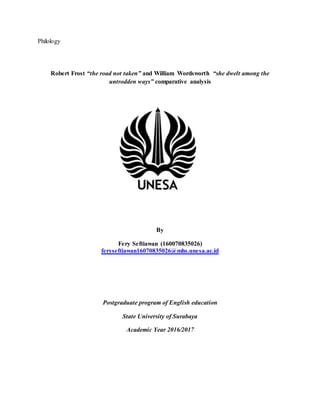This document provides an introduction and background on literary works and the concept of intertextuality. It discusses how Ferdinand de Saussure first proposed the concepts of signs, signifiers, and signifieds, which formed the basis for understanding how language and meaning are constructed. It then explains how Mikhail Bakhtin and Julia Kristeva later developed the concept of intertextuality, which is the linking of ideas and meanings between different texts. The document uses the poems "The Road Not Taken" by Robert Frost and "She Dwelt Among the Untrodden Ways" by William Wordsworth to provide an example of how intertextuality can be seen between different literary works through similar themes and ideas.







